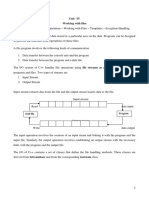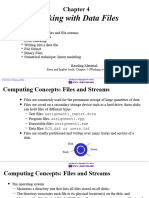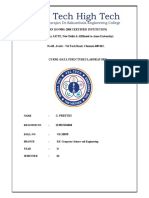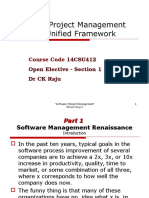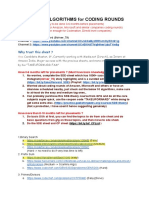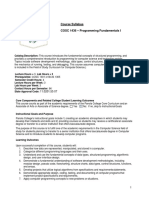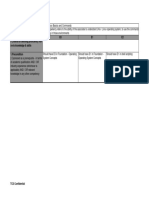0% found this document useful (0 votes)
17 views25 pagesSummer25 PL2 PL2 Lecture 9-File Iinput Output
The document outlines the principles of object-oriented programming with a focus on C++ I/O systems and file handling. It explains the concept of streams in C++, predefined streams like cin and cout, and classes for file I/O such as ifstream, ofstream, and fstream. Additionally, it provides examples of file operations and relevant functions for managing file pointers.
Uploaded by
Drakest mindCopyright
© © All Rights Reserved
We take content rights seriously. If you suspect this is your content, claim it here.
Available Formats
Download as PPTX, PDF, TXT or read online on Scribd
0% found this document useful (0 votes)
17 views25 pagesSummer25 PL2 PL2 Lecture 9-File Iinput Output
The document outlines the principles of object-oriented programming with a focus on C++ I/O systems and file handling. It explains the concept of streams in C++, predefined streams like cin and cout, and classes for file I/O such as ifstream, ofstream, and fstream. Additionally, it provides examples of file operations and relevant functions for managing file pointers.
Uploaded by
Drakest mindCopyright
© © All Rights Reserved
We take content rights seriously. If you suspect this is your content, claim it here.
Available Formats
Download as PPTX, PDF, TXT or read online on Scribd
/ 25








